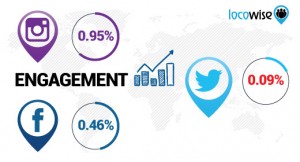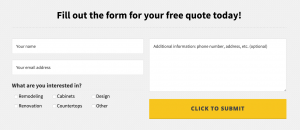
There’s no doubt that buyers’ purchasing habits are changing. They’ve changed from shopping in brick and mortar stores to shopping online. Just this year, 3591 stores are closing around the U.S. You might think that these retailers would be mom and pop shops or stores with low advertising budgets to drive traffic but, surprisingly, many of them are large retailers such as Macy’s and Guess.
However, “where” buyers shop is not the only change we are witnessing. “How” buyers shop has also changed. Nowadays, people visit multiple channels to compare products and find the best deals. Thus, a potential buyer can start their journey visiting Amazon, and then end up buying from an eCommerce store or vice versa. A BigCommerce study found that nearly half of all online product searches (48%) begin on marketplaces like Amazon.
Therefore, if you’re not using a multi-channel selling approach that involves marketplaces, you’ll be missing out on a huge amount of potential exposure and sales. As a retailer, you need to be where your customers are, and marketplaces are one of the key go-to places for shoppers. Here we’ll discuss the pros and cons of selling in marketplaces and how to effectively drive sales with them.
Pros and Cons of Selling in Marketplaces

Pros:
Get exposure to a bigger audience.
Driving and growing website traffic is one of the top concerns of any new or mature eCommerce business. Thus, there’s a lot of money involved in driving traffic. Whether it’s with the help of advertising campaigns or organic traffic, there is always a price to pay. Don’t believe me? To drive organic traffic, you’ll still have to pay the writers, SEO specialists, and managers to run the whole operation smoothly.
With marketplaces, retailers can tap into a vast amount of website traffic without much of the work necessary to be successful in a regular eCommerce store. You won’t have to spend money or time on designers, web developers, or writers; however, there are other costs involved which we’ll discuss later on. Take Amazon, for example; according to data from CIRP, Amazon boasts 80 million members just in their Amazon Prime program.
Be where your customers are.
Some retailers may feel overprotective about their brand and may be hesitant to sell on marketplaces but, like it or not, that’s where the customers are. Instead of going against the online trend, use it to your advantage. Marketplaces can enable you to sell in ways that can help drive more sales. For example, Amazon’s FBA can allow you to turn around products faster with their 2-day shipping and save on warehouse and employee costs. Always weigh out the costs and benefits to make sure it makes sense for your business.
If all of that information doesn’t convince you, think that if you’re not selling your products on marketplaces, you’ll be giving a free space for your competitors to sell similar products.
Gain instant credibility for your business.
One of the reasons buyers choose to buy products on marketplaces is because of security and trust. Instead of visiting a website they have never heard of before, they can shop for their favorite product on a trusted space they have dealt with in prior purchases. This additional trust and credibility can be projected onto your products and help drive sales faster than with an unpopular eCommerce site.
Cons:
Selling fees will be charged
Marketplaces will always charge a fee for your sales. After all, you are benefiting from their space, trust, and loyal customers. Make sure you can afford these fees and still be profitable, especially considering that your prices may have to be lowered to stay competitive in marketplaces like Amazon.
You will have less control.
Naturally, you’ll find that you have less control selling on a marketplace than your own eCommerce website. On a marketplace, you won’t be able to control the look and feel of the site or how your products are displayed. Your images, titles, and product information will have to follow a specific set of guidelines, such as having a white background in images. Otherwise, the marketplace will either reject your listing or make your listing less visible to visitors.
The good part is that you get to know these guidelines ahead of time to decide which marketplace fits your product and brand the best.
There will be more competition.
I think this con may be one of the biggest reasons why some retailers don’t sell on marketplaces. Retailers’ products compete side to side with competitor’s similar products. This competition increases the pressure for retailers to stand out, whether that represents lower pricing, better images, or additional features.
You can’t get pre-transactional conversions.
Not every visitor that sees a product online is ready to make a purchase. To make sure a potential conversion doesn’t go to waste, smart retailers must collect the visitor’s contact information; then the retailer can nurture the lead with follow-up emails until he or she is ready to convert.
Contact information can be easily obtained with a newsletter pop-up in an eCommerce store. However, on marketplaces, if the visitor it’s not ready to buy, you won’t be able to get their information to follow up with them—thus wasting the opportunity to sell.
How to Use Marketplaces to Increase Sales

Follow these steps to effectively start selling on marketplaces and drive sales.
Select the ideal marketplace and products to sell.
When thinking about marketplaces, Amazon is one of the top ones that comes to many people’s minds. However, there are many more marketplaces available. Here’s a short list of other marketplaces you may find useful:
- eBay
- Etsy – Ideal for handmade and vintage products
- Rakuten – Offers a variety of categories, but specializes in electronics
- eCrater
- com – Similar to classified ads
- Houzz – Specializes in home and remodeling
- com – Offers a variety of categories; commission-based marketplace
As you can see, there are many more marketplaces than just Amazon or eBay, and the list goes on and on. Also, note that many of them specialize in particular products. Therefore, when selecting the ideal marketplace, think about your target market and your products.
For example, if you sell vintage or handmade products, Etsy may be your best option. If you’re selling electronics, you may want to choose a marketplace like Rakuten that specializes in such items.
Pricing is another factor to keep in mind. As discussed above, fees associated with selling on marketplaces will reduce your profit margin. Thus, you need to take this into consideration when pricing your listing. Also, keep in mind that your pricing will have to be reduced even further if you’re competing on marketplaces like Amazon or eBay where price is king.
The way you position your products depends on the product’s uniqueness. If your products are not unique, you’ll have to compete by lowering prices. If you offer unique products, you may be able to sell at higher prices. Find what’s your strength and focus on it.
Remember that not every product you sell on your eCommerce store has to also be listed on a marketplace. Select which products have the highest potential to be sold on marketplaces based on a target market.
Find integrations: inventory, taxes, and pricing.
With multi-channel selling, smart retailers have to ensure all product information is properly integrated. This applies for things such as inventory and product information. Otherwise, you run the risk of selling a product that is no longer available or ordering more products than you really need.
Integrations are key to make this a smooth process. Luckily, if you have a Shopify or Bigcommerce website, Amazon integrations are available. They will help you keep your inventory organized and run reports to know the best-selling products across your different channels.
Other integrations that are worth looking into are tax and pricing integrations. Tax integrations will help you keep your taxes in order. Also, pricing integrations can help you optimize your pricing strategy with logarithmic pricing.
Include branded packaging.
Selling on marketplaces doesn’t mean you have to forgo branding. You can still increase brand awareness and get people acquainted with your brand with proper packaging. If you’re not in control of all packaging, as in the case of FBA selling, make sure to send products in packaging with branding.
For example, jewelry can be placed in a suede bag with your logo. Although Amazon will package it in a box without branding, the customer will still get a chance to see your logo on the bag. And, who knows? Maybe he or she will search for your brand online and become a loyal customer.
Summing It Up
Selling on marketplaces, in addition to selling on an eCommerce site, is becoming a standard in the industry. Offering products in multiple channels will allow you to increase your reach and drive more sales. Just make sure to choose your products and marketplaces wisely. Inventory management, pricing strategy, and target market are the keys to be successful.
Digital & Social Articles on Business 2 Community(35)







